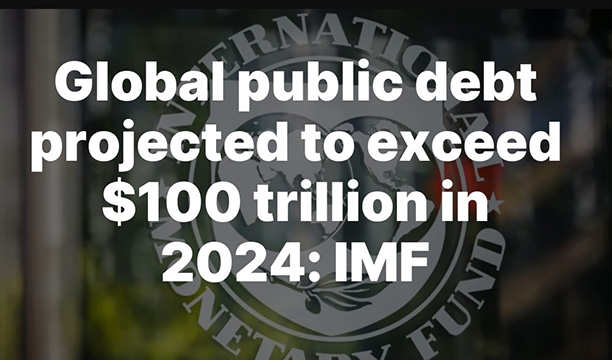
Global public debt is set to reach $100 trillion, or 93% of global gross domestic product, by the end of this year, driven by the US and China, according to new analysis by the International Monetary Fund, Bloomberg informs.
In its latest Fiscal Monitor — an overview of global public finance developments — the IMF said it expects debt to approach 100% of GDP by 2030, and it warns that governments will need to make tough decisions to stabilize borrowing.
Debt is tipped to increase in the US, Brazil, France, Italy, South Africa and UK, according to the IMF report, which urges governments to rein in debt.
“Waiting is risky: country experiences show that high debt can trigger adverse market reactions and constrains room for budgetary maneuver in the face of negative shocks,” it said.
With little political appetite to cut spending amid pressures to fund cleaner energy, support aging populations and bolster security, the “risks to the debt outlook are heavily tilted to the upside,” the IMF said.
Countries where debt is not projected to stabilize make up over half of global debt and about two-thirds of global GDP.
Using a “debt-at-risk” framework, the IMF found that the level of future debt in an extreme adverse scenario could reach 115% of GDP in three years, almost 20 percentage points higher than in the baseline projections.
“This is because high debt levels today amplify the effects of weaker growth or tighter financial conditions and higher spreads on future debt levels,” it said.
The debt-at-risk metric for advanced economies has slipped from pandemic peaks and is now estimated at 134% of GDP.
“Current fiscal adjustment plans fall far short of what is needed to ensure that debt is stabilized (or reduced) with high probability,” it said.
À propos:
Russia's foreign debt-to-GDP ratio fell to a new all-time low of 14.5% at the end of the third quarter of this year, according to RIA Novosti calculations based on the Bank of Russia data.
At the end of September 2024, Russia's external debt, both public and corporate, in monetary amounted to $293.4 billion, or approximately 27.4 trillion rubles.
At the same time, the level of Russian external debt per capita also continued to fall: on October 1, it amounted to $2,008, having decreased by approximately 3%, or $58, over July-September. The last time the indicator was lower was in 2005, when it amounted to $1,802.
Russia's foreign debt-to-GDP ratio has been steadily declining over the past few years: it reached 31% at the end of 2020, then in 2022 it was only 16.8%, and then 15.7% at the end of last year. At the end of the second quarter, it decreased further to 14.9%.
The highest foreign debt-to-GDP ratio in Russia's modern history was observed in 1999, when it reached 91%, and per capita in 2013 at $5,072.
…After these admissions by the IMF, it would be interesting to remind who has just been awarded the Nobel Prize in Economics. The new laureates tried to prove that in Western countries, “thanks to the high level of influence of non-governmental organizations and civil society, the level of economic development is higher.”
But – what IMF confirms – all Western countries are in the deepest debt crisis, from which from which it will be extremely difficult for them to get out.
The authority of the Nobel Prize was crossed out by the report of the International Monetary Fund, which lists by name the world's largest debtors – these are Western countries, where there are plenty of non-governmental organizations but no balanced financial system.
read more in our Telegram-channel https://t.me/The_International_Affairs

 11:50 17.10.2024 •
11:50 17.10.2024 •






















